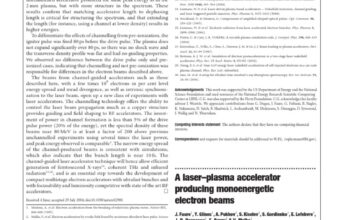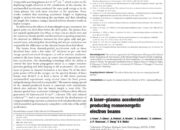In an era characterized by rapid technological advancement, the emergence of quantum computing heralds a paradigm shift not only in computational efficiency but also in the domain of cryptography. The advent of quantum technology presents a formidable barrier to traditional cryptographic methods that have, for decades, formed the bedrock of digital security. As quantum systems evolve, the implications for code breakers who previously thrived under classical computational frameworks have become increasingly dire.
At the crux of this transformation lies the principle of superposition, a concept denoting that quantum entities can exist in multiple states simultaneously. This phenomenon enables quantum computers to process vast amounts of data in parallel, exponentially amplifying their processing capabilities compared to classical counterparts confined to binary states. Such power presents a double-edged sword; while it provides unparalleled opportunities for innovation in various fields, it simultaneously poses existential threats to conventional encryption methodologies. The classic RSA encryption, upon which much of the Internet’s security relies, could be rendered obsolete in the face of a sufficiently advanced quantum adversary.
Consider the historical implications of this shift. The development of the Enigma machine during World War II is reminiscent of the current landscape; what was once considered an insurmountable barrier to code breaking was eventually dismantled with the advent of more sophisticated decryption techniques. Similarly, the quantum age demands a reevaluation of the cryptographic tools we employ. What was previously an impenetrable fortress of security is beginning to resemble a palisade, vulnerable to a new breed of technological marauders.
One of the salient characteristics of quantum computing is its potential to exploit Shor’s algorithm, an efficient method designed to factor large integers. This feat, infeasible for classical computers operating under polynomial time constraints, becomes hastily achievable when quantum computation enters the fray. Consequently, public key cryptography, which relies on the difficulty of factoring large numbers, faces its greatest existential threat. The implications of this vulnerability are staggering; institutions ranging from financial establishments to governmental agencies must confront the specter of compromised data integrity.
Moreover, the race towards quantum supremacy engenders not only a technological contest but also a conceptual reimagining of security paradigms. The notion of “quantum entanglement,” where particles become interdependent irrespective of distance, offers prospects for quantum key distribution (QKD). Through this innovative approach, even the nefarious attempts at interception by potential code breakers would be futile, as any eavesdropping would unavoidably alter the state of the quantum keys, alerting the communicating parties. This form of communication exemplifies an intriguing metaphorical tapestry, woven with threads of uncertainty and assurance, where privacy transcends conventional understandings of secrecy.
Nevertheless, the transition to quantum-resistant cryptographic systems is fraught with challenges. The development and implementation of post-quantum cryptography, which promises to withstand quantum computational threats, require rigorous mathematical fortification and extensive peer validation. These cryptographic systems must be meticulously crafted to ensure they are both secure against quantum attacks and efficient for practical utilization across diverse applications.
As researchers persist in their endeavors, concerns also arise regarding the accessibility of quantum technology. Just as the dawn of nuclear physics birthed ethical dilemmas regarding proliferation, so too does quantum technology raise questions of equity and safety. If quantum capabilities are solely accessible to a select few, particularly in the realm of state-sponsored entities, the global digital landscape may become perilously imbalanced. The potential for asymmetric warfare, wherein powerful nations wield quantum technology against less equipped adversaries, could precipitate unprecedented conflicts driven by cybersecurity breaches.
Furthermore, cybersecurity professionals are now astutely aware of both the opportunities and responsibilities presented by these advancements. The implementation of multilayered security frameworks, incorporating quantum-resistant algorithms alongside classical techniques, is rapidly becoming imperative. These frameworks usher in a new epoch of resilience against cyber threats, reminiscent of the fortified cities of antiquity that evolved in response to evolving siege technologies.
Ultimately, the narrative surrounding quantum technology is not merely one of threat but also of possibility. It offers the tantalizing vision of a future where previously unimaginable computational feats may be realized, from drug discovery to climate modeling. However, intertwined with this promise is the sobering recognition that progress is often contingent upon adaptation. Code breakers and cybersecurity professionals alike must recalibrate their strategies, cultivating a mindset attuned to the nuances of an ever-evolving landscape.
As we navigate this quantum-infused reality, the metaphor of the chessboard is particularly apt. Each move, calculated and well-planned, requires foresight and adaptability. The stakes are high, and the players—ranging from rogue hackers to multinational corporations and institutions—are engaging in a high-stakes game where the rules are rewritten at an unprecedented pace. Ultimately, as quantum technology tightens security, one fundamental truth emerges: those unwilling to evolve in response to this transformative epoch may find their strategies as obsolete as the ciphers of history.












